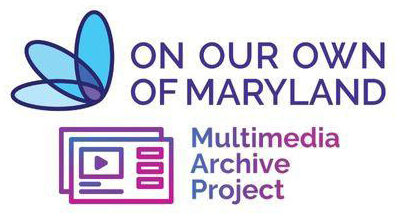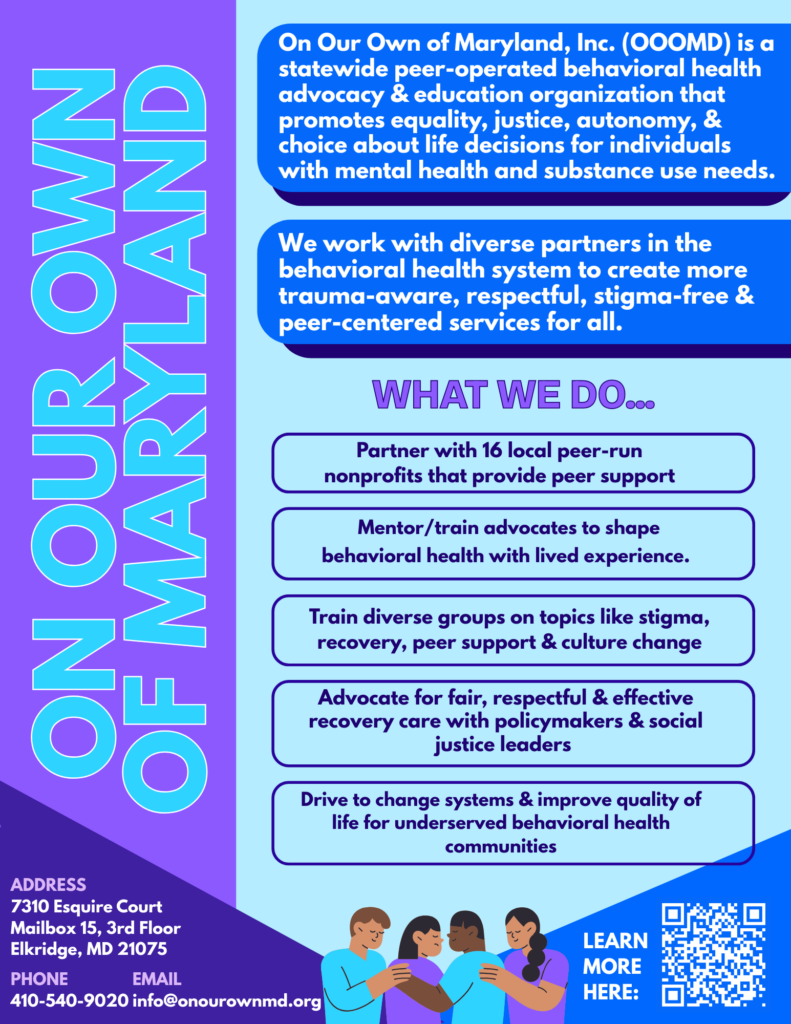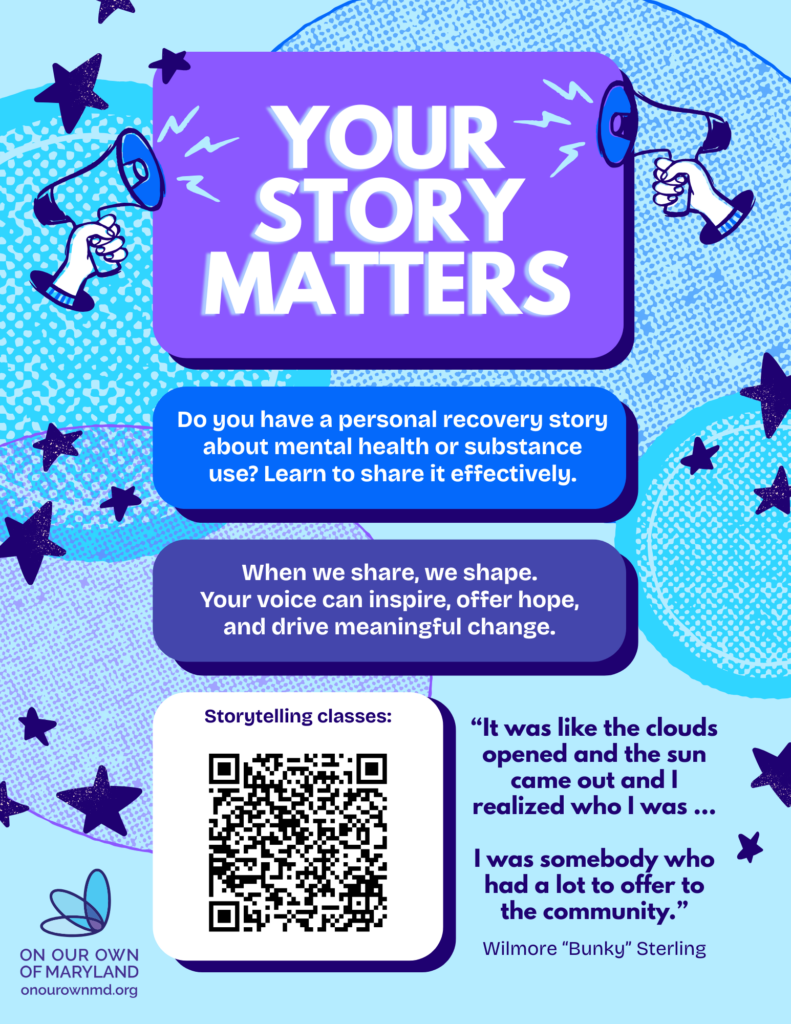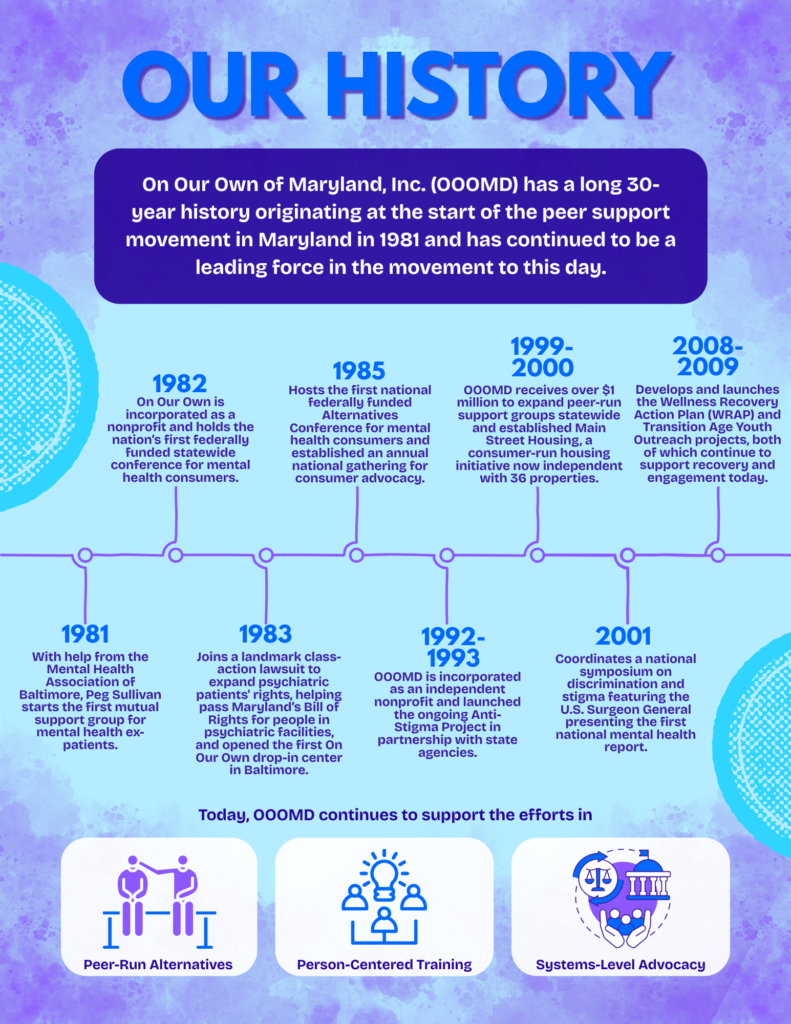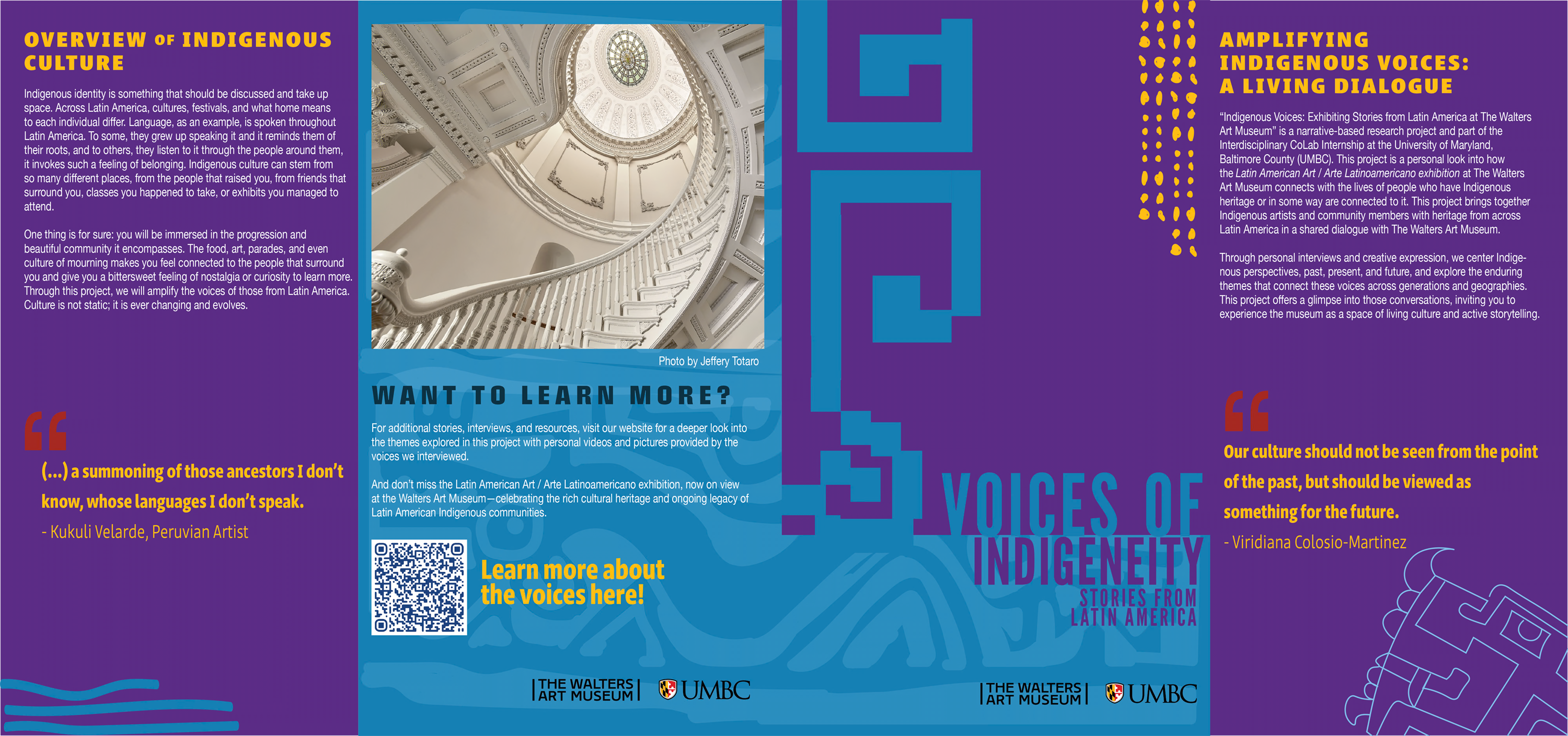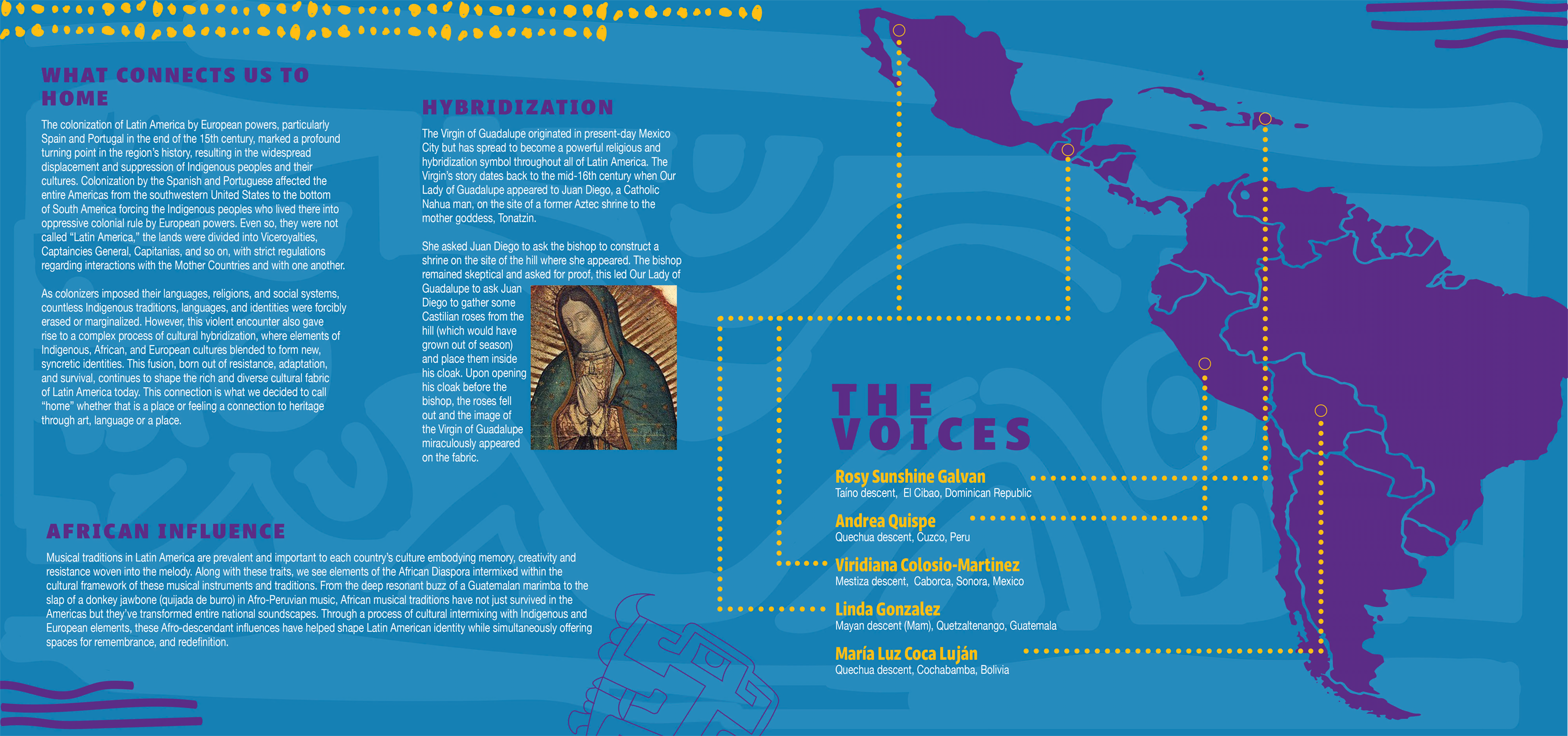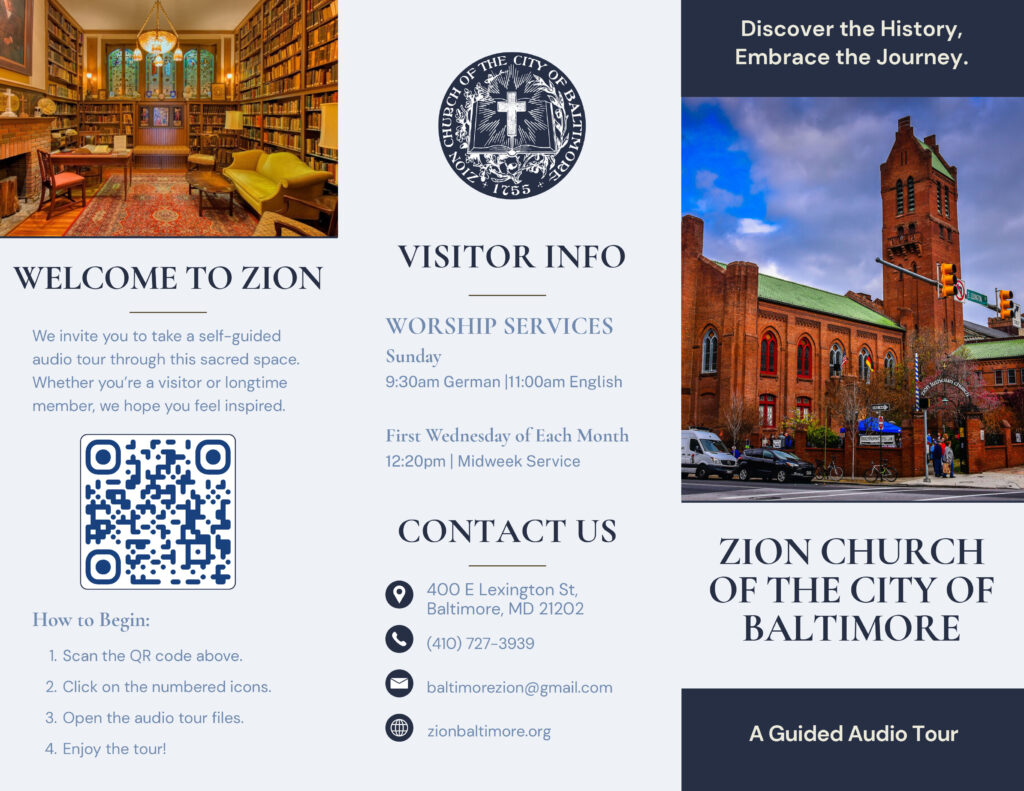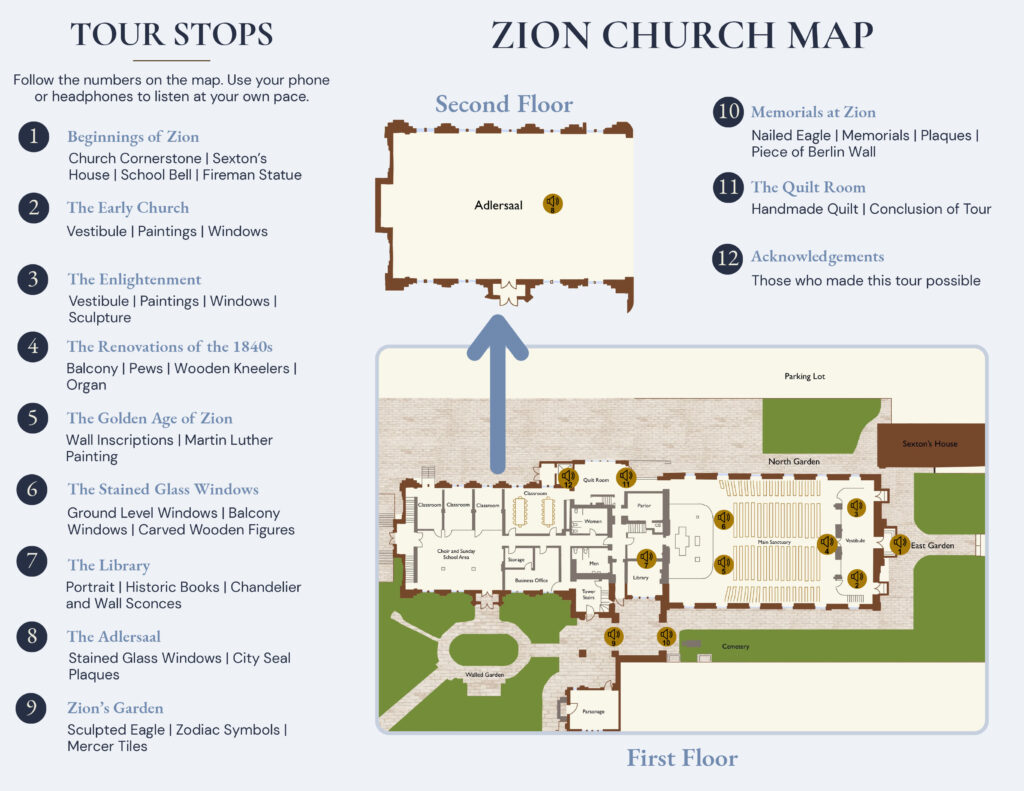SUMMER 2025 PROJECTS
On Our Own of Maryland
Project Leader: Dr. Lindsay DiCuirci – English
Student Interns and Majors:
- Cole Johnson – Financial Economic
- Hira Khan – Biology
- Kina Soberano – Biology/Public Health/Sociology
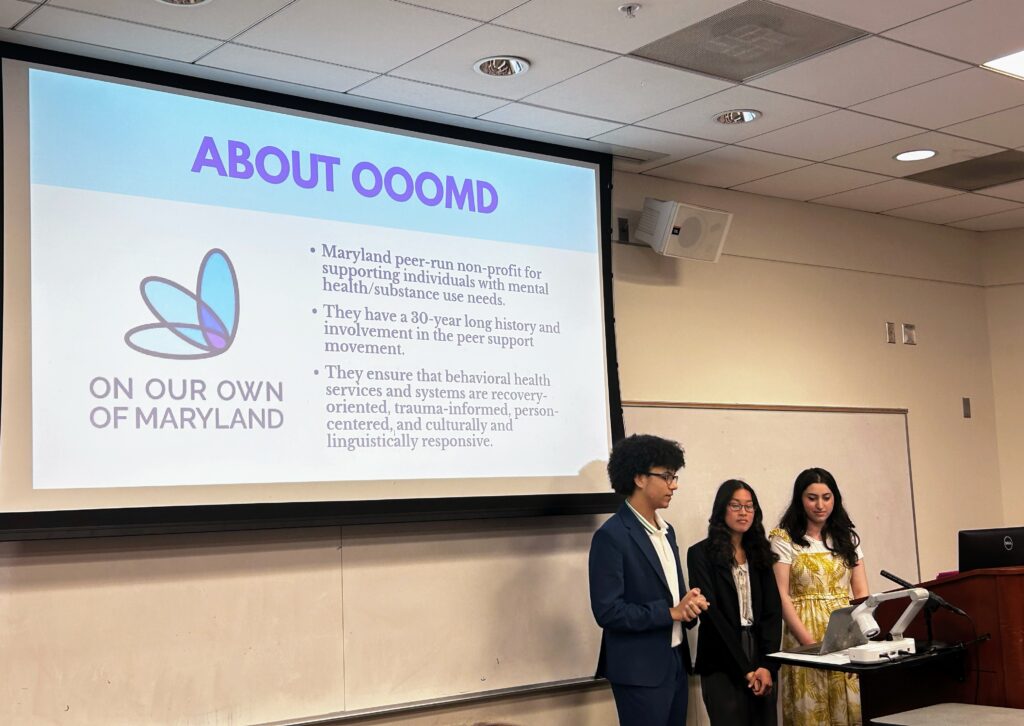
On Our Own of Maryland, Inc. (OOOMD) is a statewide peer-operated behavioral health advocacy and education organization which promotes equality, justice, autonomy, and choice about life decisions for individuals with mental health and substance use needs. Since 1992, OOOMD has worked with peers (people with lived and living experiences of mental health challenges, substance use, trauma, systems involvement, etc.), service providers, community leaders, local and state political leadership, and professional and community organizations to ensure that behavioral health services and systems are recovery-oriented, trauma-informed, person-centered, and culturally and linguistically responsive. Learn more at www.onourownmd.org.
This interdisciplinary student project team reviewed and analyzed materials from OOOMD’s deep archive of audio, video, and print matter which capture 30 years of community organizing and milestone accomplishments in Maryland’s mental health peer community. Based on this research, the team produced videos, infographic sheets, along with a redesign and content for OOOMD’s social media accounts to communicate their innovations and effectiveness in community-led advocacy and service provision.
Below are just three of the infographics created by the project team to tell the story of OOOMD
Visit On Our Own of Maryland’s Instagram account to see the redesign and more infographics created by the project team.
Lights, camera, archives! Creating video-based instruction tools for novice researchers in Special Collections and Archives
Project Leaders: Lindsey Loeper and Susan Graham – Albin O. Kuhn Library & Gallery
Student Interns and Majors:
- Finley Bandy – History
- Dagmawi Delelegne – Computer Science
- Sam Nguyen – Graphic Design
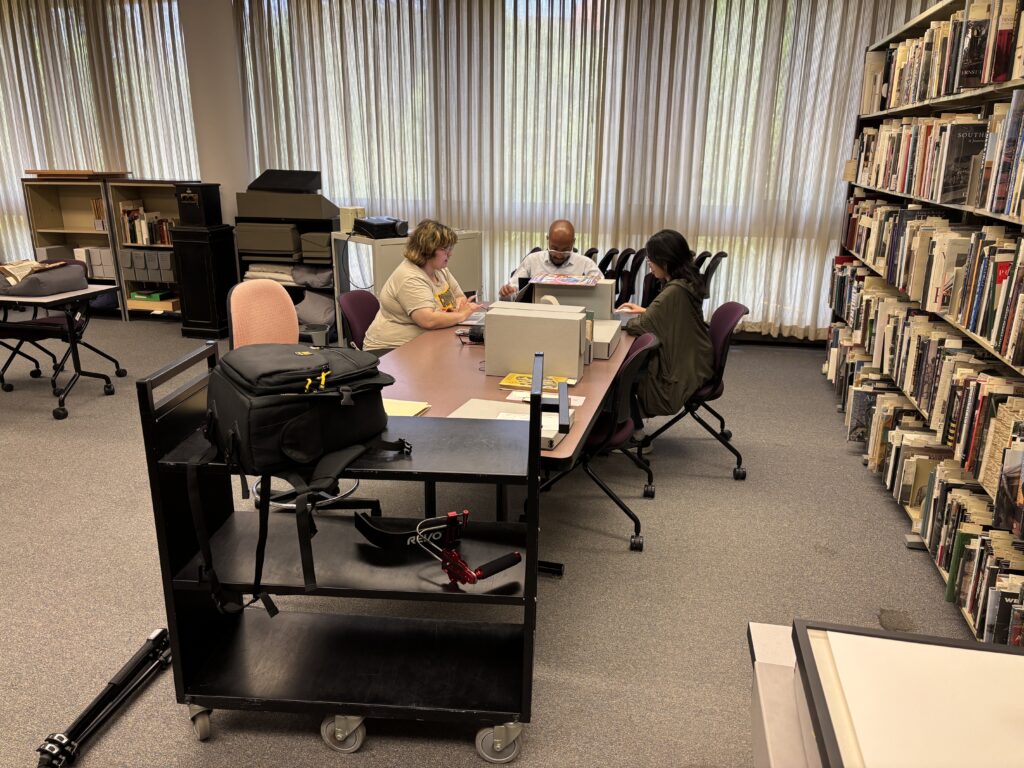
UMBC’s Special Collections contain a wealth of unique, one-of-a-kind resources for students to use in research, including photographs, books, archives, and more related to topics such as the history of photography, Maryland folklife, parapsychology and the occult, science fiction, biological sciences, alternative press, radical literature, and UMBC history. Using these materials for the first time can be intimidating. This interdisciplinary team of students created introductory and instructional videos aimed at easing the anxiety of new researchers.
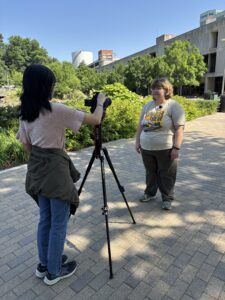
The project team examined the research experience, including learning about collection holdings, working in the reading room, information-seeking behavior, wayfinding techniques, visual and archival literacy, the department’s rules, and how to ask for help. Team members were trained in video production techniques, learned to use video equipment, and explored the breadth of resources in the Special Collections to create engaging, visually interesting, and informative videos that help researchers feel prepared, comfortable, and welcome using Special Collections materials. The videos produced by the project team are hosted on the UMBC Special Collections website and shared during instruction sessions.
View the videos created by the project team
Storytelling through Baltimore Album Quilts
Project Leader: Dr. Sarah Fouts – American Studies
Student Interns and Majors:
- Kat Gill – American Studies/English
- Ben Kayes – Theatre Design & Production
- Alyssa Thomas – Asian Studies
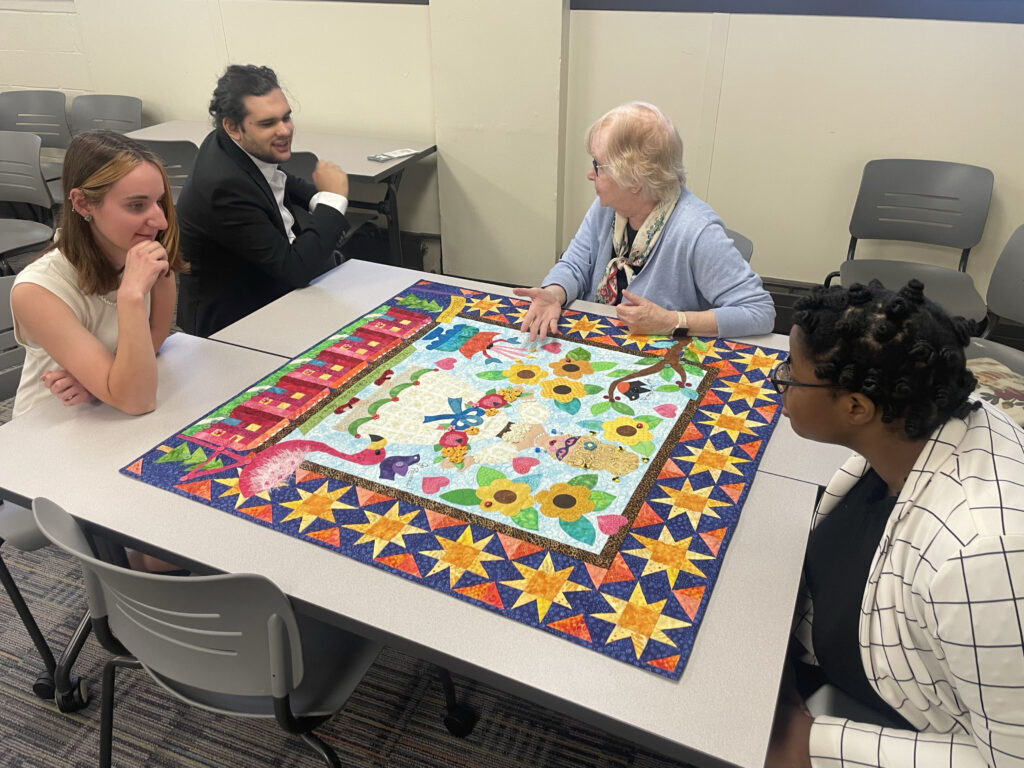
How do symbols and motifs in Baltimore Album Quilts commemorate events and represent their time period? What stories can the applique blocks and indelible ink tell us about the quiltmakers and their families? How can we help recreate this quilting history? Is there anything inherently political about quilting and other textile arts?
The work of this interdisciplinary project team documents the history of Baltimore Album Quilts, threading together topics of Maryland history, textile design, place, and identity. This important quilting tradition emerged in the Maryland region between the 1840s and 1850s and flourished far beyond the state. Interweaving archival research and oral histories, students explored the artistry along with the familial and community connections behind these quilts. Under the guidance of quilt expert and UMBC Founding Four alum, Mimi Dietrich, as well as members of the Stansbury family (key family in creation and preservation the quilts), the team of undergraduate researchers investigated the archives, designs, materials, and collaborative processes involved in creating this material culture to stitch together information about Baltimore Album Quilts. This archival research involved examining historical records, photographs, and documents from sources such as the Library of Congress, Maryland State Archives, Maryland Historical Society, and the Maryland Quilt Heritage Project. Additionally, the team conducted oral history interviews to allow them to trace and document personal stories, family histories, and knowledge about quilt-making traditions.
Watch the Five Minute History video on Baltimore Album Quilts created by the project team for Baltimore Heritage.
Indigenous Voices: Exhibiting Stories from Latin America at The Walters Art Museum
Project Leaders:
- Dr. Renée Lambert-Brétière – Modern Languages, Linguistics, & Intercultural Communication
- Edgar Reyes – Visual Arts
Student Interns and Majors:
- Eman Hussien – Information Systems
- Christopher Hutton – Graphic Design
- Ryan Morales – Global Studies
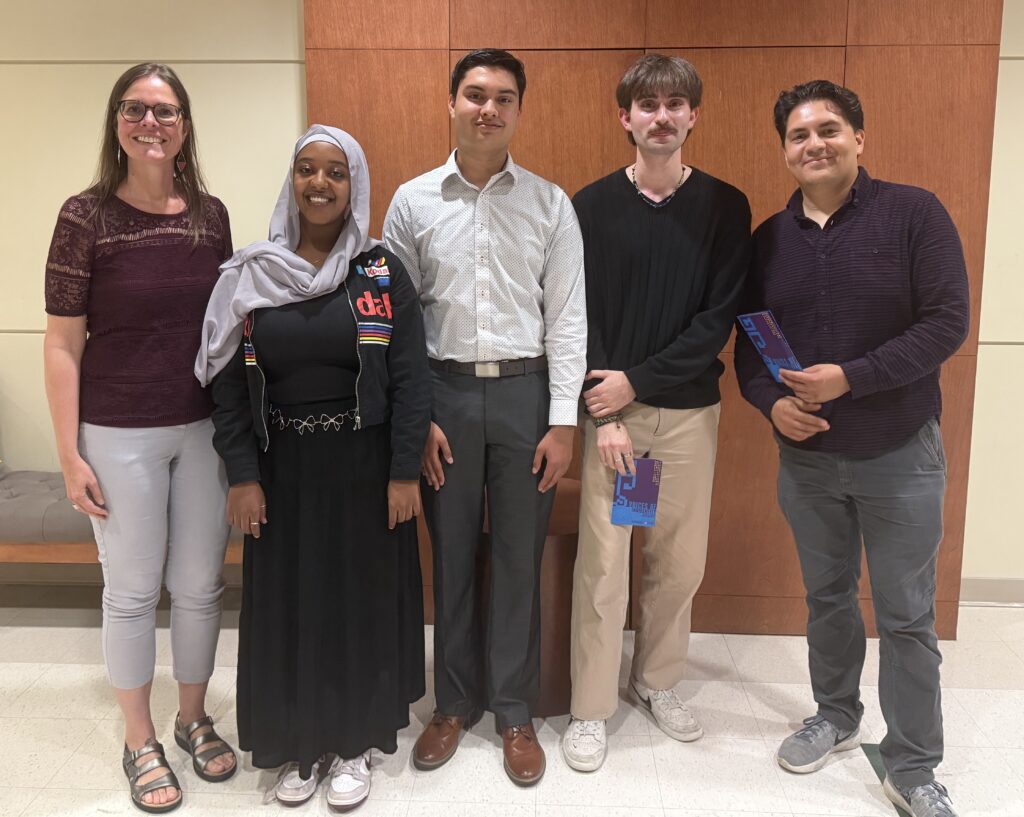
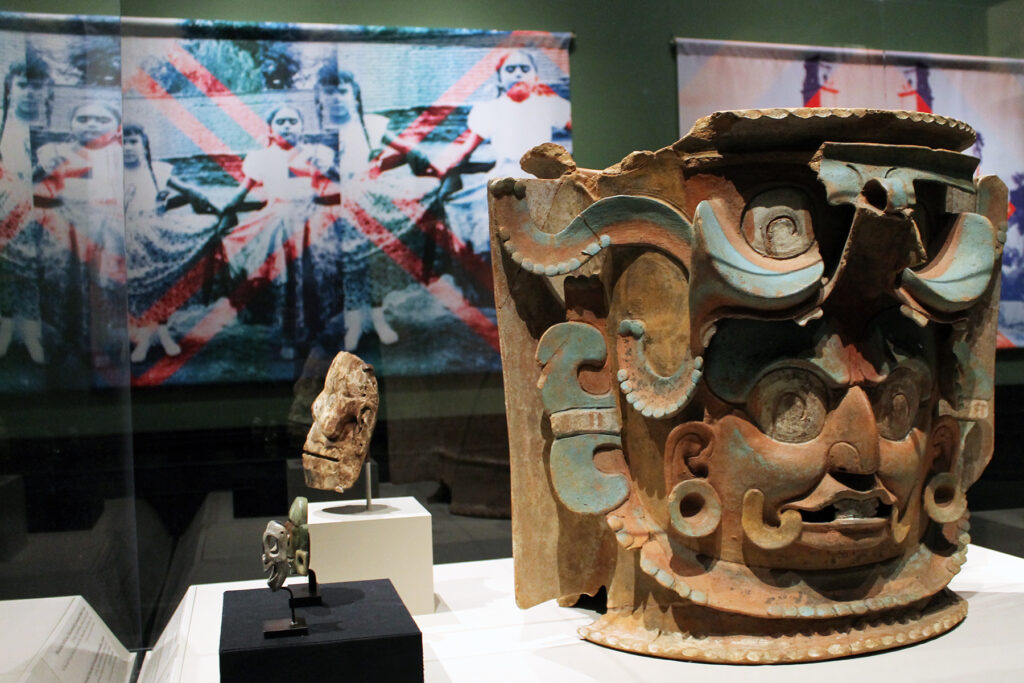
This interdisciplinary project team of student researchers worked with staff from The Walters Art Museum to share stories and cultural traditions from Indigenous community members in reflection of the museum’s new exhibition, “Latin American Art / Arte Latinoamericano.” The exhibit showcases over 200 artworks from South, Central, Meso America, and the Caribbean. The project team went beyond the material aspects of these artworks to incorporate the intangible elements of Indigenous cultures, such as language, history, and tradition. By exploring the diverse perspectives of indigenous communities, students created a more comprehensive understanding of the art and culture of the region.
Students dove deep into the historical and contemporary significance of Indigenous languages and cultures, and engaged with community members to gather their stories, experiences, and perspectives on the artworks. The team used their research and learning to develop an online documentation through videos and audio recordings to share the stories of community members to a public audience.
Visit the project team’s website to view the digital multimedia content they created.
Below is the pamphlet created by the project team and shared with visitors to the collection to introduce the project, provide context for the artworks, and a QR code to access their multimedia content.
People and Places of Baltimore – An Audio Tour of the Historic Zion Church of the City of Baltimore
Project Leader: Susanne Sutton – Modern Languages, Linguistics, & Intercultural Communication
Student Interns and Majors:
- Lyna Beraich – Computer Science
- Ethan Lam – Music Technology
- Katie Treadon – Media & Communication Studies
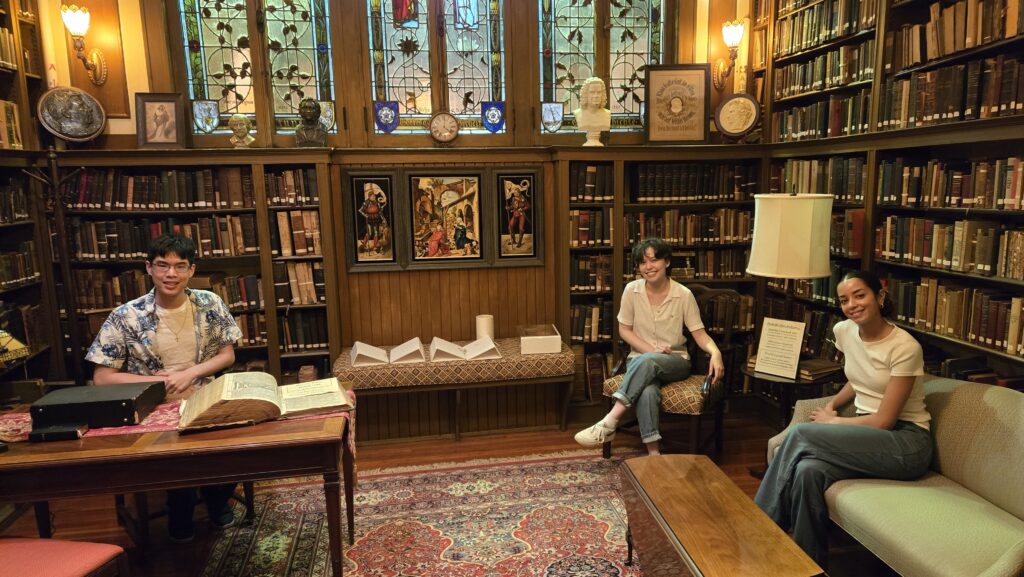
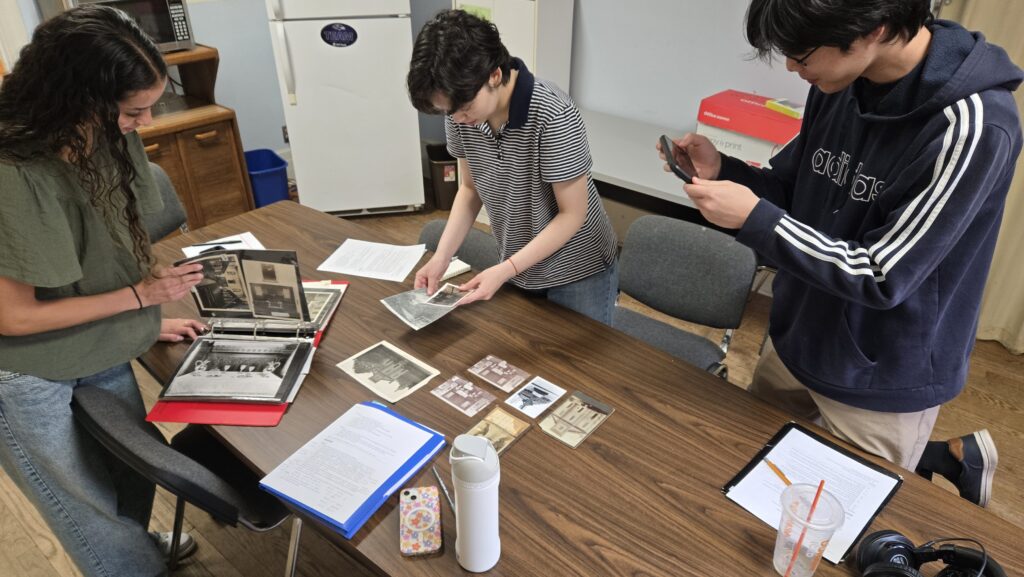
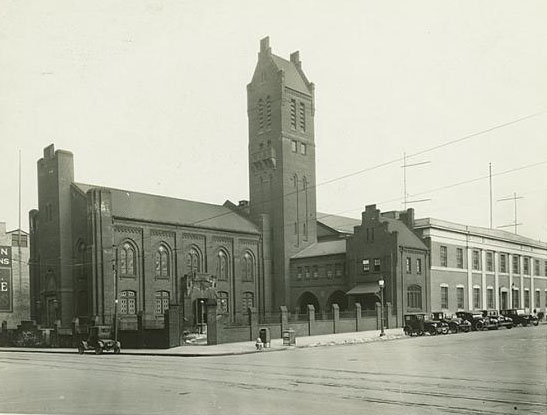
The Zion Church of the City of Baltimore, which today is located at 400 E. Lexington Street in downtown Baltimore, is one of the oldest churches in the city. It was founded in 1755 as “The Evangelical Lutheran Congregation at Baltimore Town” to serve Baltimore’s German immigrant community. Throughout its over 250-year history, pastors and congregations left their mark on Zion as they led efforts to expand the church, to add a school, or to rebuild it after a fire in 1840 partially destroyed the sanctuary. The interior of the church and its various connected buildings also tell Zion’s story through the centuries. Since 2011, the Zion Church of the City of Baltimore has been listed on the National Register of Historic Places in Central Baltimore.
This interdisciplinary project team produced an audio narrative tour of this historic Church to modernize the visitor experience, appeal to a wider audience, and increase interest in the Church as a central institution in Baltimore. The team discussed options with church leaders, examined historical resources, used advanced technological tools, and collaborated to develop a series of audio narratives that can be accessed by anyone interested in visiting this historic Baltimore site, through which the history of the Church comes alive through recorded audio narrative that can be accessed via cell phone technology.
View the interactive map of Zion Church of the City of Baltimore, which include links to the YouTube videos for each tour stop created by the project team.
